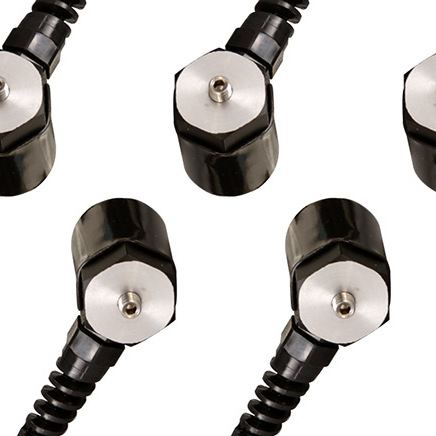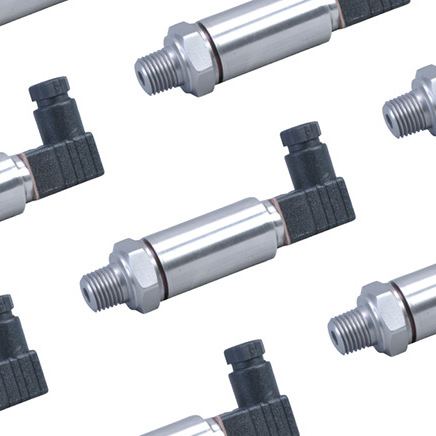Pressure transducers are useful in a variety of industries. Many of these industries handle volatile chemicals or fluids that are under immense pressure. So, pressure transducers have to provide the engineers or operators with values that indicate the real conditions within a container. False values or errors can jeopardize the safety of the whole facility or plant. This is why pressure transducer accuracy is of the utmost importance.
Accuracy
Pressure transducer accuracy is the closeness of the measured value to the actual value. If the measured value is very close or the same as the true value, then we say that the pressure transducer is accurate. If the measured valued has a big enough discrepancy, then the pressure transducer isn’t accurate and is unfit for use.Generally, pressure transducers from reputed companies vary only as little as 0.25% from the true value.
Frequency
Pressure transducer frequency is the measure of how fast the pressure transducer can respond to change in pressure. The reason why pressure transducer frequency response is important is that in many cases, the pressure to be measured using the pressure transducer can change very rapidly.
To measure rapidly varying pressure, you need equally faster transducers. This is where frequency response helps us to choose the right device for the right application.
Choosing pressure transducers with high response time enables you to take multiple readings in a short time. All these readings get updated and displayed on the monitor. Frequency response is measured in Hertz (Hz) or milliseconds (ms). High-speed pressure transducers can measure up to 1000 readings/second. The cost of the pressure transducer varies directly with its response time where high-speed pressure transducers can cost significantly more than transducers with a low-frequency response.
Hysteresis
Pressure transducer hysteresis plays a major role in determining its overall accuracy. Hence, it is one factor that is never overlooked in the design and construction of pressure transducer.
Hysteresis is the difference in values that occur when measuring the same pressure. You will notice that the set of values measured when pressure is loaded on a transducer does not reset to their original value when the pressure releases.
Hysteresis is caused by a part inside the pressure transducer that reacts to a change in pressure, the diaphragm. When we excite the transducer with pressure, the diaphragm will move accordingly. However, when we remove the pressure, the diaphragm doesn’t spring back instantly. There is a time delay between the removal of pressure and the resetting of the diaphragm. This delay or lag leads to hysteresis.
Output
A pressure transducer converts physical force into electrical signals. Generally, these signals lie in the range of millivolts. Most controllers amplify these tiny voltage signals from the transducer to properly read the data.
There are also other forms of output for pressure transducers like milliAmpere and voltage output pressure transducers. Choosing between these popular options depends purely on the requirements of the user. However, certain pressure transducers do have limits in power output. For example, a 2-wire transducer can only output in milliAmpere.
Voltage output pressure transducers provide an output in the range of 0-5dc or 0-10dc. These are high-level conditioned signals and are compatible with most controllers and PLCs.
However, the milliAmpere output which lies between 4-20mA is least affected by resistance or electrical noise, making them perfect for long-distance relays.
Range
The range of the pressure transducer determines the lowest to the highest value of pressure that the sensor can measure accurately. If you have a setup that makes 1000 psi of pressure, then the pressure sensor you choose must have a range more than the maximum value to be measured.
If you use a pressure sensor with a 1000 psi maximum range, it will not be able to read the pressure values beyond 1000 psi. So, the general rule of thumb is to select a pressure transducer that gives 40% to 50% more headroom than the maximum rated pressure.
Hence, for a setup where the maximum rated pressure is 1000psi, select a pressure transducer than can measure up to 1500psi just to be on the safer side. Another benefit of selecting a pressure transducer with a higher is that the transducer will perform better since it doesn’t get pushed to its limits all the time.
Resolution
Pressure transducer resolution is the smallest pressure increase that the sensor can measure. Resolution is expressed in percentage of FSO (Full Scale Output). This value is important to determine the precision of the pressure transducer in detecting a pressure variation.
A pressure transducer rated for 1000 psi with a resolution of 0.1% means that it will be able to measure pressure variations as low as 1psi. When buying a pressure transducer, make sure that you ask for the resolution of the device. Usually, manufacturers use two types of terms to describe resolution: Average resolution and Maximum Resolution.
Average resolution is the median of the best and worst values. Maximum resolution is the highest resolution you can expect from your sensor.
Sensitivity
Pressure transducer sensitivity is the smallest variation in measurement that can cause a change in the transducer’s output voltage. Sensitivity is different from resolution as it is the smallest pressure increase that a transducer can measure.
Often, resolution and sensitivity are used interchangeably. However, they are very different in terms of how a pressure transducer works and how well it can report measurements.
Span
The pressure transducer span is the working range of the transducer. Usually, span is the range between the URL (Upper range limit) And the LRL (Lower Range Limit).
So, if a pressure transducer can measure between 500psi and 2500psi, then the span of the pressure transducer is 2000 psi (URL – LRL).
Span and Zero are the two units used in the calibration of a pressure transducer. Zero is the reading of a transducer at the zero line.
When calibrating a pressure transducer, Zero adjustment enables the measurer to correct the lower limit of the pressure transducer while Span adjustment corrects its upper limit.
Uncertainty
Pressure transducer uncertainty is a range in which where we think the true value to lie. The uncertainty factor gets introduced when we do not know the true value of a measurement. This makes it hard to establish the measured valued as the most certain value. Hence, instead of showing the measured value as it is, we include an interval that contains the true value.
Uncertainty is also defined as an estimated error, which is the difference between the true value and the measured value. However, in cases where we do not know the true value, we use uncertainty.
Various factors can lead to uncertainty such as operating mode, environment, fluid media, calibration frequency, etc.
- What is a pressure transducer?
- How do pressure transducers work?
- Pressure sensor vs transducer
- Custom pressure transducers
- Pressure transducers FAQ
- Selecting a pressure sensor
- How to specify
- Installing a pressure transducer
- Troubleshooting
- Selecing an amplifier
- Selecing a controller
- Selecing a data logger

